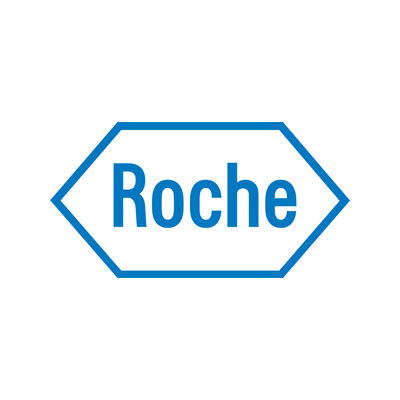预约演示
更新于:2025-09-13
CTSL inhibitors(Roche)
更新于:2025-09-13
概要
基本信息
原研机构 |
在研机构- |
非在研机构 |
权益机构- |
最高研发阶段无进展临床前 |
首次获批日期- |
最高研发阶段(中国)- |
特殊审评- |
关联
100 项与 CTSL inhibitors(Roche) 相关的临床结果
登录后查看更多信息
100 项与 CTSL inhibitors(Roche) 相关的转化医学
登录后查看更多信息
100 项与 CTSL inhibitors(Roche) 相关的专利(医药)
登录后查看更多信息
12
项与 CTSL inhibitors(Roche) 相关的文献(医药)2025-01-01·Bio-protocol
Fluorescence Polarization-Based High-Throughput Screening Assay for Inhibitors Targeting Cathepsin L
Article
作者: Zhou, Wenwen ; You, Baoqing ; Guo, Keyu ; Li, Yan ; Wang, Zhen ; Zhang, Jing ; Si, Shuyi
Cathepsin L (CTSL), a lysosomal cysteine protease belonging to the papain-like protease family, is primarily involved in intracellular protein degradation, antigen processing, and extracellular matrix remodeling. It plays critical roles in pathological conditions, including cancer metastasis, neurodegenerative disorders, and viral infection, due to dysregulated activity or overexpression. Thus, inhibitors targeting CTSL are under investigation for therapeutic applications. Current approaches for identifying CTSL inhibitors predominantly rely on fluorescence-labeled substrates, fluorescence resonance energy transfer (FRET), and cell-based screening assays. Here, we applied the principle of fluorescence polarization (FP) to the detection of substrate cleavage activity by CTSL through changes in millipolarization unit (mp) values and established a cost-effective, quantitative, reagent- and time-saving inhibitor high-throughput screening (HTS) assay. We also provide detailed steps for the expression and purification of highly active CTSL from eukaryotic cells, which lays a solid foundation for the FP-based assay. A key advantage of this assay lies in its reduced susceptibility to fluorescence interference, as the fluorescein isothiocyanate (FITC) fluorophore exhibits high quantum efficiency with an emission peak at 535 nm-a wavelength range distinct from most naturally occurring fluorescent molecules. The assay's adaptability to reaction time, temperature, and dimethyl sulfoxide (DMSO) concentration minimizes false-positive or false-negative results caused by minor experimental inconsistencies, streamlining the screening process. Furthermore, the protocol requires fewer operational steps, reduced incubation time, and lower quantities of CTSL and substrates compared to conventional methods. This rapid, cost-effective, and scalable approach aligns well with the demands of HTS platforms. Key features • Detailed procedures for eukaryotic expression, purification, and identification of active recombinant CTSL and determination of its biological activity. • Full description for application of fluorescence polarization (FP)-based high-throughput screening (HTS) assay targeting CTSL. • Elaboration for the application of the FP-based assay in CTSL activity evaluation or drug discovery. • Protocol is readily adaptable to other proteases with a similar catalytic mechanism.
2024-12-01·Computational and Structural Biotechnology Journal
Discovering novel Cathepsin L inhibitors from natural products using artificial intelligence
Article
作者: Zhu, Juan-Juan ; Wang, Hao ; Yang, Jin-Kui ; Li, Qi ; Zhou, Si-Rui ; Kim, Hanna
Cathepsin L (CTSL) is a promising therapeutic target for metabolic disorders. Current pharmacological interventions targeting CTSL have demonstrated potential in reducing body weight gain, serum insulin levels, and improving glucose tolerance. However, the clinical application of CTSL inhibitors remains limited. In this study, we used a combination of artificial intelligence and experimental methods to identify new CTSL inhibitors from natural products. Through a robust deep learning model and molecular docking, we screened 150 molecules from natural products for experimental validation. At a concentration of 100 µM, we found that 36 of them exhibited more than 50 % inhibition of CTSL. Notably, 13 molecules displayed over 90 % inhibition and exhibiting concentration-dependent effects. The molecular dynamics simulation on the two most potent inhibitors, Plumbagin and Beta-Lapachone, demonstrated stable interaction at the CTSL active site. Enzyme kinetics studies have shown that these inhibitors exert an uncompetitive inhibitory effect on CTSL. In conclusion, our research identifies Plumbagin and Beta-Lapachone as potential CTSL inhibitors, offering promising candidates for the treatment of metabolic disorders and illustrating the effectiveness of artificial intelligence in drug discovery.
2024-06-01·BMB Reports
Genetic disruption of ATAT1 causes RhoA downregulation through abnormal truncation of C/EBPβ.
Article
作者: Kim, Jaegu ; Hwang, Ye Eun ; Rhee, Sangmyung ; Choi, Jee-Hye ; Jeong, Jangho ; Park, Kwon-Sik ; You, Eunae ; Ji, Minjoo ; Song, Seongeun ; Keum, Seula
Microtubule acetylation has been shown to regulate actin filament dynamics by modulating signaling pathways that control actin organization, although the precise mechanisms remain unknown. In this study, we found that the downregulation of microtubule acetylation via the disruption ATAT1 (which encodes α-tubulin N-acetyltransferase 1) inhibited the expression of RhoA, a small GTPase involved in regulating the organization of actin filaments and the formation of stress fibers. Analysis of RHOA promoter and chromatin immunoprecipitation assays revealed that C/EBPβ is a major regulator of RHOA expression. Interestingly, the majority of C/EBPβ in ATAT1 knockout (KO) cells was found in the nucleus as a 27-kDa fragment (referred to as C/EBPβp27) lacking the N-terminus of C/EBPβ. Overexpression of a gene encoding a C/EBPβp27-mimicking protein via an N-terminal deletion in C/EBPβ led to competitive binding with wild-type C/EBPβ at the C/EBPβ binding site in the RHOA promoter, resulting in a significant decrease of RHOA expression. We also found that cathepsin L (CTSL), which is overexpressed in ATAT1 KO cells, is responsible for C/EBPβp27 formation in the nucleus. Treatment with a CTSL inhibitor led to the restoration of RHOA expression by downregulation of C/EBPβp27 and the invasive ability of ATAT1 KO MDA-MB-231 breast cancer cells. Collectively, our findings suggest that the downregulation of microtubule acetylation associated with ATAT1 deficiency suppresses RHOA expression by forming C/EBPβp27 in the nucleus through CTSL. We propose that CTSL and C/EBPβp27 may represent a novel therapeutic target for breast cancer treatment. [BMB Reports 2024; 57(6): 293-298].
100 项与 CTSL inhibitors(Roche) 相关的药物交易
登录后查看更多信息
研发状态
10 条进展最快的记录, 后查看更多信息
登录
| 适应症 | 最高研发状态 | 国家/地区 | 公司 | 日期 |
|---|---|---|---|---|
| 布氏锥虫感染 | 临床前 | 瑞士 | 2018-04-26 |
登录后查看更多信息
临床结果
临床结果
适应症
分期
评价
查看全部结果
| 研究 | 分期 | 人群特征 | 评价人数 | 分组 | 结果 | 评价 | 发布日期 |
|---|
No Data | |||||||
登录后查看更多信息
转化医学
使用我们的转化医学数据加速您的研究。
登录
或

药物交易
使用我们的药物交易数据加速您的研究。
登录
或

核心专利
使用我们的核心专利数据促进您的研究。
登录
或

临床分析
紧跟全球注册中心的最新临床试验。
登录
或

批准
利用最新的监管批准信息加速您的研究。
登录
或

特殊审评
只需点击几下即可了解关键药物信息。
登录
或

Eureka LS:
全新生物医药AI Agent 覆盖科研全链路,让突破性发现快人一步
立即开始免费试用!
智慧芽新药情报库是智慧芽专为生命科学人士构建的基于AI的创新药情报平台,助您全方位提升您的研发与决策效率。
立即开始数据试用!
智慧芽新药库数据也通过智慧芽数据服务平台,以API或者数据包形式对外开放,助您更加充分利用智慧芽新药情报信息。
生物序列数据库
生物药研发创新
免费使用
化学结构数据库
小分子化药研发创新
免费使用
